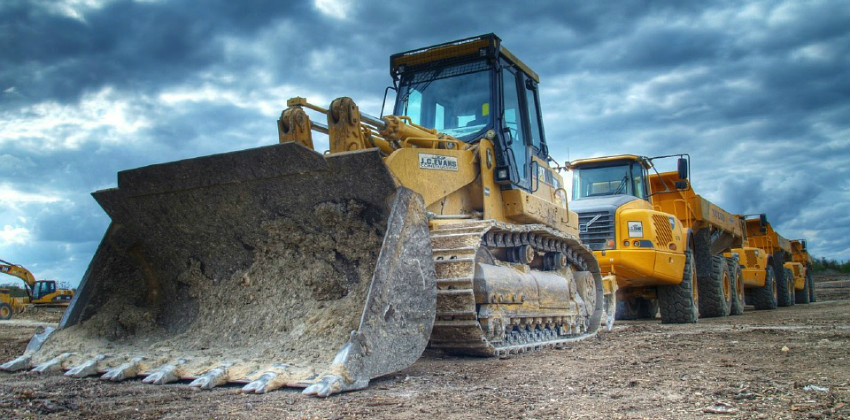Leasing Vs. Purchasing Building And Construction Equipment: Making the Right Choice for Your Project
When getting started on a building and construction job, one of the vital decisions that project managers and stakeholders encounter is whether to lease or get building and construction devices. The choice hinges on various aspects such as price factors to consider, task duration, equipment upkeep, versatility, danger, and scalability monitoring.
Price Considerations
Renting out devices commonly needs lower first settlements contrasted to acquiring, making it an appealing choice for short-term jobs or specialists with budget plan restraints. In the long run, continually renting devices can accumulate higher costs than purchasing, specifically for extensive tasks.
On the other hand, buying construction equipment involves greater upfront expenses but can result in lasting cost savings, especially for constant customers or long-term projects. Eventually, the choice in between purchasing and renting out building and construction tools pivots on the task's duration, regularity of usage, budget plan factors to consider, and long-term economic objectives.
Task Period

Conversely, for lasting projects or recurring building and construction work, purchasing equipment might be the much more economical choice. Purchasing devices can cause cost savings in the future, especially if the equipment will certainly be regularly used. In addition, having devices supplies a feeling of control over its accessibility and enables for modification to fit specific task demands.

Devices Maintenance
Given the essential role task period plays in establishing the most cost-efficient technique between purchasing and leasing building equipment, the emphasis currently shifts towards checking out the vital facet of devices maintenance. Correct maintenance is essential for ensuring the optimal performance and longevity of construction devices. Renting out tools commonly comes with the advantage of having actually properly maintained equipment supplied by the rental company. This can alleviate the concern of upkeep tasks from the task proprietor or contractor, saving time and initiative. On the other hand, possessing tools needs an aggressive method to maintenance to protect against failures, ensure safety, and expand the equipment's lifespan. Normal assessments, maintenance, and prompt fixings are essential to keep owned and operated equipment in top functioning condition. Consider maintenance prices when deciding between acquiring and renting out, as disregarding upkeep can lead to expensive fixings, downtime, and project hold-ups. Inevitably, a properly maintained building devices fleet, whether leased or had, is vital for the successful and effective completion of construction projects.
Versatility and Scalability
In the world of building and construction equipment monitoring, the aspect of adaptability and scalability holds significant significance for job performance and source application. Opting to rent out construction tools supplies a high degree of cheap heavy equipment versatility as it enables the fast modification of equipment types and amounts based upon the evolving needs of a task. Renting out enables service providers to access a variety of specific tools that might be required for particular jobs without the long-lasting dedication of possession. This adaptability is particularly beneficial for jobs with varying requirements or unsure periods (boom lift rental).
Furthermore, scalability, an additional vital factor, is naturally connected to versatility. Leasing building and construction equipment uses the advantage of easily scaling operations up or down as job needs fluctuate. Specialists can promptly trade or include tools to match the task's changing demands without the constraints of owning properties that may become underutilized or obsolete. This ability to scale sources her explanation efficiently can result in cost financial savings and improved task timelines, making renting a positive option for jobs requiring adaptability and receptive source allowance.
Danger Monitoring
Efficient risk administration in construction tools operations is vital to ensuring job success and mitigating possible financial losses. Building projects inherently involve different threats, such as devices breakdowns, accidents, and project delays, which can dramatically impact the task timeline and budget. By thoroughly thinking about the dangers connected with owning or leasing building tools, project supervisors can make enlightened choices to reduce these possible risks.
Renting out building equipment can provide a level of threat reduction by transferring the obligation of repair and maintenance to the rental firm. This can reduce the financial worry on the task owner in case of unforeseen tools failures (forklift rental). In addition, leasing provides the adaptability to access specific devices for particular job stages, reducing the danger of possessing underutilized machinery
On the other hand, having building and construction devices provides a feeling of control over its usage and maintenance. Nonetheless, this likewise means birthing the full duty for repair services, upkeep prices, and depreciation, boosting the financial risks related to equipment possession. Mindful risk assessment and consideration of elements such as job period, devices application, and upkeep needs are critical in determining one of the most suitable choice for reliable danger monitoring in building projects.
Verdict
Finally, when deciding between purchasing and leasing building devices, it is necessary to consider expense, job duration, equipment upkeep, scalability, adaptability, and threat management. Each aspect plays an essential duty in determining one of the most appropriate option for the project at hand. By very carefully assessing these aspects, project supervisors can make an enlightened decision you can try here that straightens with their budget plan, timeline, and general project goals.

Comments on “Scissor Lift Rental: Safe and Effective Solutions”